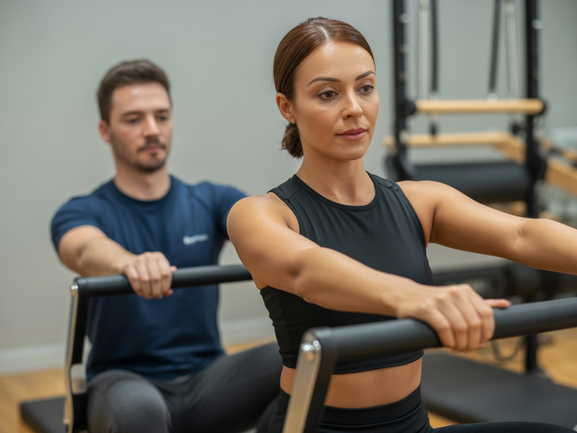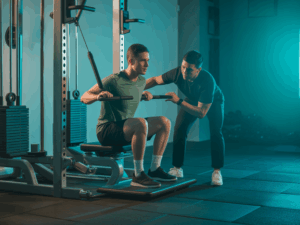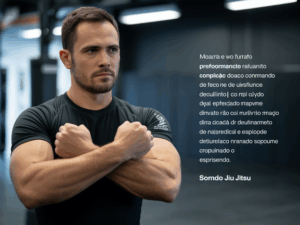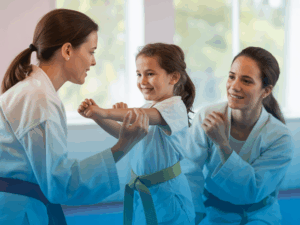Shoulder Machine Training for Pilates: A Guide for Instructors
Discover how integrating shoulder machine training with Pilates principles can significantly enhance client mobility, correct posture, and drive your professional growth as an instructor in 2025.
By Personal Millbody Team
Last updated: Sep 03 2025
As a Pilates instructor, you have mastered the art of control, precision, and core-centered movement. But to truly stand out and deliver transformative results, you must look beyond the mat. Integrating shoulder machine training into your practice is a forward-thinking strategy that complements Pilates, unlocking new levels of strength, stability, and postural correction for your clients.
This comprehensive guide explores how this powerful combination can elevate your clients’ outcomes and expand your career. We will cover the essential anatomy, specific exercises with Pilates-focused cues, and show how this expanded knowledge, powered by the right technology, translates into significant professional growth and higher income streams.
The Synergy Between Pilates and Shoulder Machine Training
The core principles of Pilates—concentration, control, center, flow, precision, and breathing—are perfectly transferable to machine-based strength work. When you teach a client to use a shoulder press with the same mindfulness as a Reformer exercise, the results are profound. This integrated approach builds robust strength while reinforcing the mind-body connection that is central to your teaching philosophy.
According to research from the National Institutes of Health (NIH), targeted strengthening of the scapular and rotator cuff muscles is critical for preventing and rehabilitating shoulder injuries, a common issue for many clients that proper shoulder machine training can address.
Understanding Shoulder Anatomy: A Refresher for Instructors
To effectively program shoulder machine training, a clear understanding of the shoulder girdle’s anatomy is crucial. The shoulder is the most mobile joint in the body, but this mobility comes at the cost of stability. It’s a complex structure composed of several muscles working in harmony.
- Deltoids: The primary shoulder muscle with three heads (anterior, lateral, posterior) responsible for lifting the arm in different directions.
- Rotator Cuff: A group of four muscles (supraspinatus, infraspinatus, teres minor, and subscapularis) that stabilize the head of the humerus within the shoulder socket.
- Trapezius: A large muscle that runs from the neck down to the middle back, crucial for scapular movement and stability.
- Rhomboids: Located between the spine and scapulae, these muscles are key for scapular retraction and good posture.
Understanding these groups helps you select specific machine exercises to target weaknesses and create a balanced, functional physique for your clients.
Why Integrating Shoulder Training is Crucial for Your Clients
Combining these disciplines offers a more holistic approach to fitness, addressing needs that Pilates alone might not fully cover. By adding shoulder strengthening exercises, you empower your clients to build a more resilient and balanced body.
- Enhanced Shoulder Mobility and Stability: Machines provide controlled resistance through a full range of motion, which is excellent for safely improving flexibility while building stability.
- Superior Postural Correction: By strengthening key muscles like the deltoids, rhomboids, and trapezius, you can more effectively address common postural issues such as rounded shoulders and forward head posture.
- Balanced Muscle Development: While Pilates excels at developing deep stabilizing muscles, shoulder machine training is fantastic for targeting larger muscle groups for comprehensive, well-rounded strength.
- Increased Functional Strength: This hybrid approach prepares your clients for everyday activities, from lifting groceries to carrying children, significantly reducing their risk of injury.
Common Shoulder Imbalances and How Machine Training Corrects Them
Many clients present with predictable patterns of muscle imbalance due to modern lifestyles, such as prolonged sitting and screen time. A common issue is an overactive upper trapezius and tight anterior deltoids, combined with weak rhomboids and rear deltoids. This leads to the classic ‘slouched’ posture.
Shoulder machine training directly counteracts this by:
- Strengthening the Upper Back: Exercises like the Reverse Pec-Deck and Seated Row specifically target the rhomboids and middle traps, pulling the shoulder blades back into a neutral position.
- Improving Scapular Control: By cueing scapular retraction and depression during exercises, you retrain neuromuscular patterns, promoting better posture even outside the gym.
- Balancing the Deltoids: A focus on rear deltoid exercises helps balance the strength of the anterior deltoid, creating a more stable and aesthetically pleasing shoulder.
How to Program Shoulder Machine Exercises for Pilates Clients
Here are five key machine exercises you can introduce, always emphasizing the foundational principles of Pilates. Remember to start with light weight to ensure perfect form before progressing. This focus on form is what makes your approach superior to that of a standard gym trainer.
- Seated Shoulder Press
Focus: Deltoid strength and scapular control.
Pilates Cue: Instruct your client to maintain a neutral spine and engage their core as if zipping up their powerhouse. The movement must be controlled on both the concentric and eccentric phases, avoiding any arching in the lower back. Feel the length in the spine as you press. - Lateral Raise Machine
Focus: Medial deltoid development and shoulder width.
Pilates Cue: Emphasize initiating the movement from the shoulder, not by shrugging the trapezius. Imagine the arms floating up and down with deliberate resistance, maintaining a long neck. - Reverse Pec-Deck Machine
Focus: Rear deltoids and upper back muscles (rhomboids, middle traps) for postural improvement.
Pilates Cue: Teach clients to retract their scapulae before starting. The focus is on squeezing the shoulder blades together, which directly counteracts the effects of slouching. Keep the chest open. - Cable Face Pulls
Focus: External rotators and scapular retractors.
Pilates Cue: This is a fantastic exercise for postural correction. Cue clients to pull the rope towards their face while externally rotating the shoulders, keeping the chest open and proud. It’s all about quality, not quantity. - Seated Row Machine
Focus: Lats, rhomboids, and biceps.
Pilates Cue: Similar to rowing on the Reformer, the power comes from the back, not the arms. Instruct a stable pelvis and an elongated spine. The shoulder blades should glide back and together as the handle is pulled towards the torso.
Key Exercise Summary
| Exercise | Primary Muscle Focus | Key Pilates Cue |
|---|---|---|
| Seated Shoulder Press | Deltoids, Triceps | Engage powerhouse, neutral spine |
| Lateral Raise | Medial Deltoids | No shrugging, controlled float |
| Reverse Pec-Deck | Rear Deltoids, Rhomboids | Scapular retraction first |
| Cable Face Pulls | External Rotators, Traps | Open chest, external rotation |
| Seated Row | Lats, Rhomboids | Power from the back, stable pelvis |
How to Turn This Expertise into Professional Growth
Expanding your expertise is the first step; monetizing it and building your brand is the next. This is where technology becomes your greatest ally. Welcome to Personal Millbody | The revolution in the Personal’s career has begun. We provide the technology to transform your passion and knowledge into a thriving, modern business.
Imagine offering hybrid programs that blend in-person Pilates sessions with guided shoulder machine training workouts your clients can follow at their gym. With the Personal Millbody platform, you can:
- Create and Sell Custom Workout Plans: Design unique programs that include your new shoulder strengthening exercises and deliver them through a professional, branded app.
- Build Your Personal Brand: Stop being just another instructor at a studio. Have your own personalized app to build a direct, lasting relationship with your clients.
- Manage Clients Effortlessly: Our tools simplify scheduling, payments, and communication, freeing you to focus on what you do best: teaching.
🎯 Ready to take the next step in your career? Start transforming your career now and unlock your true potential.
Frequently Asked Questions (FAQ)
Can machine training be as mindful as Pilates?
Absolutely. The mindfulness of an exercise comes from the intention and focus you apply. By teaching clients to use Pilates principles—like concentration, control, and breath—with shoulder machines, you transform a simple strength exercise into a powerful mind-body practice. This is the unique value you bring as a Pilates instructor.
How do I integrate these exercises into a Pilates session?
You can offer hybrid sessions where time is split between the mat/Reformer and the weight room. Alternatively, create separate ‘Pilates-Informed Strength’ classes or use a platform like Personal Millbody to prescribe machine workouts as “homework” to complement their Pilates practice.
Is this training suitable for all Pilates clients?
It can be adapted for most clients, but a thorough assessment is crucial. Always start with very light weights to teach proper form and control. For clients with injuries, collaboration with a physical therapist is recommended. For deeper knowledge, explore resources like the American College of Sports Medicine (ACSM).
How much does it cost to start offering hybrid training?
The initial cost can be minimal. If you already have access to a gym, there are no new equipment costs. The main investment is in a digital platform to manage and deliver your programs. Tools like Personal Millbody offer scalable plans designed for fitness entrepreneurs, allowing you to start small and grow.
What are the business benefits of adding shoulder machine training?
By offering a hybrid service, you differentiate yourself from other instructors. You can attract a wider range of clients, increase your revenue streams by selling digital programs, and build a scalable business that isn’t limited by your physical time and location. This positions you as a modern, versatile fitness expert and justifies a higher price point.
Join the Movement of Modern Fitness Professionals
The fitness industry is evolving rapidly, and the most successful instructors are those who adapt. By blending your deep knowledge of Pilates with effective shoulder machine training techniques, you position yourself as a versatile and highly valuable professional who delivers comprehensive, lasting results.
💡 Tip: Don’t wait for the future to happen. Create it. Create your account and become part of the largest platform for personal trainers in Brazil. If you have any questions, feel free to contact us.
For more insights, check out our blog for articles, news, and data on the fitness market in Brazil and worldwide.



